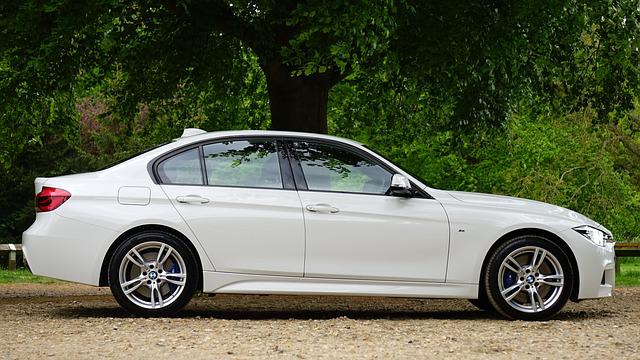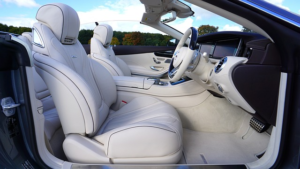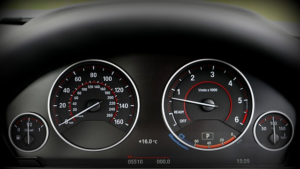In the fast lane of electric vehicle growth, Sitka looks for a place to install its first public charging station – KCAW
What a difference nine years makes. Michael Mahoney, Sitka’s lone EV owner in 2013, charges his Chevy Volt. Sitka’s electric fleet has grown to 126 in 2022, 90-percent of them Nissan Leafs. That’s 15 Leafs for every 1,000 people in Sitka, a ratio which beats even the state of California. (KCAW photo Erik Neumann)
A Sitka organization is working with the Alaska Energy Authority to install…….

What a difference nine years makes. Michael Mahoney, Sitka’s lone EV owner in 2013, charges his Chevy Volt. Sitka’s electric fleet has grown to 126 in 2022, 90-percent of them Nissan Leafs. That’s 15 Leafs for every 1,000 people in Sitka, a ratio which beats even the state of California. (KCAW photo Erik Neumann)
A Sitka organization is working with the Alaska Energy Authority to install a mostly-federally funded electric vehicle charger in the community.
But figuring out where to put it is a complicated problem. An electric vehicle advocate from Juneau recently offered his advice on the question.
If you haven’t realized it by now, Sitka is an electric vehicle town. In pure numbers, it’s a national leader.
“If you were your own state, you would be beating California right now, in terms of EV adoption. Hardily beating California as a state,” said EV advocate Devon Kibby.
Kibby is an electrical engineer and the founder of the Alaska Electric Vehicle Association, a nonprofit, all-volunteer advocacy organization for electric cars, trucks, and buses.
Kibby said that, based on the latest data from the Division of Motor Vehicles, Sitka had 126 electric vehicles, 90-percent of them Nissan Leafs.
That’s 15 Nissan Leafs for every 1,000 people in Sitka. Elsewhere in the state, that number drops down to around two.
But there isn’t a single public charging station. Barb Bingham said the community had unique characteristics that made electric vehicles attractive for many residents, but not for all.
“I think we lead the nation because we’re at 14 miles of of highway and we’re in a unique position to have short range vehicles,” said Bingham. “But I think for commercial businesses with light duty fleets, apartment dwellers, and liveaboards in the harbor that would like to have electric vehicles — and for most of us who trickle charge — it would be nice to be able to do a fast charge once in a while. So I think I think we foresee it (a public charging station) as being a kind of a universal opportunity for EV.”
Bingham was one of the co-hosts of a presentation organized by Transition Sitka on May 23, to hear from Kibby about his work advocating for Juneau’s 19 public charging stations. Kibby bought a Leaf in 2014 and said he was okay charging it at home overnight from a regular electrical outlet. But as Juneau’s population of electric vehicles grew, so did the need for public infrastructure.
“Sometimes my car doesn’t get plugged in at night, I forget,” said Kibby. “And I drive away in the morning and I go, ‘Oh no.’ And if I need it, I know that those (public) chargers are there to go to if I need to get a few more miles to get back home that night. And then secondly — and the thing that we’ve been working more on in Juneau lately — is people who don’t have garages. So apartment dwellers, people in the downtown core of Juneau who don’t have off-street parking: How to help them go EV.”
Eighty-percent of the cost of Sitka’s first-ever public charging station will be covered by the Alaska Energy Authority, which is passing through funding from the federal infrastructure bill to install public charging stations along every fifty miles of “national highway” in the state. That qualifies Sitka for exactly one charger (as Sitka’s “national highway” runs from the roundabout to the airport). Now it’s a matter of figuring out where to put it: The site must have access to power, obviously, and if it’s on private property, it will require the cooperation of land owners.
In Juneau, the Fred Meyer grocery store was the site of some of that community’s first chargers. Sitka’s Lakeside Grocery is a possible candidate, as are the Post Office parking lot, the RV lot at Sealing Cove, the grassy area beside the Japonski Boathouse, the boat impound area at Thompsen Harbor, and the former long-term parking area at the airport.
What likely won’t be needed, however, is any high-tech networking equipment or credit card readers. Kibby said that the best value has proven to be charging cars for free.
“When people plug into these level 2 chargers for an hour, the cost for the electricity is a couple dollars at most,” he said. “And we found in the beginning that the cost to charge someone a few dollars exceeded the cost of electricity itself.”
Kibby said that Juneau’s first chargers were secondhand, and came with ports that may become obsolete when electric vehicles eventually adopt a standard. Sitka’s charger will have four ports, and will have to be more advanced by necessity, as electric vehicle battery capacity has grown massively. Kibby’s 2014 Leaf had a battery capacity of 24 kilowatt hours. A new Chevy Bolt has about two-and-a-half times that. Anew Rivian pickup truck comes with a staggering 180 kilowatt battery.
A level 2 charger draws about as much power as a clothes dryer, or an oven, but can still take a long time to replenish these huge battery packs. Kibby said this has forced a change in Juneau’s approach, since the first public charging stations were installed in 2017.
“And so the one thing that we’ve had to kind of think about in Juneau for the public chargers, when you used to go and plug your Leaf in for an hour, and you’d recover about 25% of your charge,” said Kibby. “And that seems like a lot. A quarter of your battery was replenished in an hour. But with these newer vehicles that are coming out, we’re starting to think more about how they’re going to need to be plugged in longer, but less frequently, compared to the Leaf, which was plugged in frequently, but not for very long. And so that’s been kind of a shift in the thinking of our public infrastructure in general.”
Kibby answered questions from Sitkans about charging stations, and other details surrounding electric vehicles. One EV owner said that he had a 2011 Leaf, the oldest in Sitka, and he feared the cost of replacing the battery pack would exceed the cost of the car – although he was still getting around 30 miles per charge.
Kibby said that although there were less expensive options out there for replacing battery packs, electric vehicles were not immune from the same factors that affected the lifespan of gas-powered vehicles in Alaska.
“I think the car’s frame and other mechanical components are going to rust out before you’ll need a full battery replacement,” Kibby said.
Transition Sitka organizers conducted a brief straw poll among attendees at the presentation about their preferred location for Sitka’s lone, federally funded public charging station. There wasn’t a clear consensus. Kibby urged Sitkans to consider what they wanted to accomplish with the charging station: “Is it going to charge personal light-duty vehicles, or allow the electrification of some commercial fleet?” he asked. “What in your mind is the best use, or low-hanging fruit, of the electrification sector that could occur because of this station, considering that you guys already have nation-leading adoption (of EVs) with no public chargers?”






